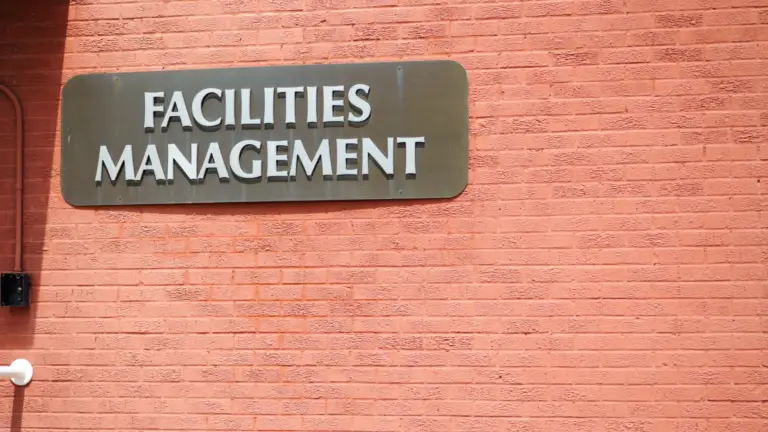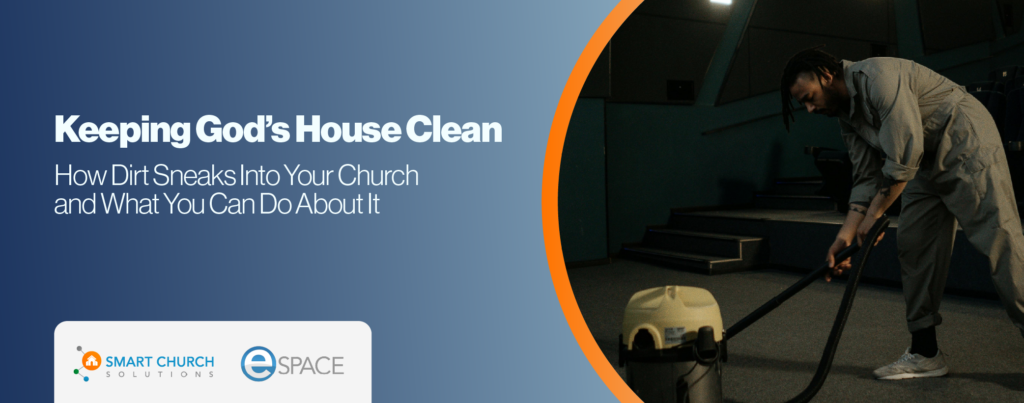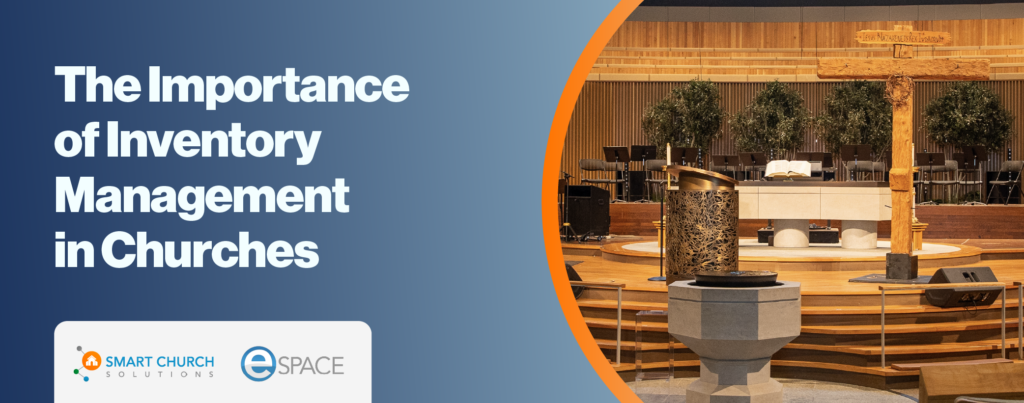Once you have a good handle on preventative and deferred maintenance, another item to review is the church utility bill. You might be spending more money than necessary.
In late 2020, Smart Church Solutions performed a Church Facility Operations Benchmarking Assessment. In this report, we evaluated how churches of comparable size and operational tempos perform. One aspect of this assessment was to gather information regarding utility costs. In our survey, respondents spent $1.38 per square foot on utilities (gas and electric combined).
The largest area of operational savings is tied to utility costs. It is the most visible since we get a utility bill each month. A church’s utility bill will consume $1.00 to $1.50 per square foot annually. For a 100,000 square foot facility, that is $100,000 to $150,000 over a year. That said, the cost of keeping the lights on could pay the salary of several staff members.
In this post, we will dive into several practical yet simple ways to reduce church utility costs.
Reduce Your HVAC Power Consumption
For most churches, 50-75% of the utility bill is driven by the consumption of energy to heat and cool facilities. The greatest opportunity to have a significant impact on your costs is by exploring energy savings with these systems.
Change Your Set Points
This may sound overly simplistic. But it is still one of the best and least expensive ways to reduce energy consumption. Whether using a manual thermostat or a Building Automation System, you’ll lower your thermostat (for heat) for each degree you lower your utility bill by an average of 1%.
Each degree you set your thermostat above 75 degrees Fahrenheit cuts your cooling costs by 3% in cooling mode. If we continue with our example above (assuming you are spending $1.25/square foot or $125,000 annually, 60% of your utility bills are for heating and cooling, and that you change your set points by two degrees), you could save about $1,500 annually.
Use Programmable Thermostats
For some of you, this will sound elementary. However, I assure you there are far more churches using manual thermostats than you realize. According to Energy Star, you can save about 8% a year by properly setting a programmable thermostat (vs. a manual thermostat).
Move Toward Building Automation
Now, don’t let this overwhelm you. There are several levels of complexity associated with the generic term “building automation system.” According to the EPA’s “Greening EPA Glossary,” a BAS can be defined as “A system that optimizes the start-up and performance of HVAC equipment (and alarm systems). A BAS increases the interaction between the mechanical subsystems of a building. It also improves occupant comfort, lowers energy use, and allows off-site building control.”
- Type #1: BAS/IBS: You will also hear this referred to as a “Building Management System” and even “Intelligent Building Systems.” These are basically systems that help control building systems operations, primarily HVAC. They are generally computer-based control systems installed in buildings to control and monitor the building’s mechanical and electrical equipment. A BAS usually consists of software and hardware and has many forms and price points. Check out eSPACE HVAC integration software.
- Type #2: PC/Computer-Based Systems: In these systems, there is a system controller that is generally run by a laptop or other type of computer. There are proprietary software that runs on the laptop and interfaces with the actual system hardware to set schedules, monitor system challenges, and track system issues, among other functions.
- Type #3: Interface HVAC System with Room Scheduling Software: Some independent room scheduling software programs offer some interface with HVAC systems. In the case of our system, eSPACE, a church can subscribe to the interface and the system can communicate with a BAS, a ‘stand-alone’ communicating thermostat solution or with freestanding wireless/WiFi thermostats. These interface programs allow you to engage and disengage your HVAC systems based on the actual room usage.
All in all, it helps operational costs with reduced energy consumption. It also increases efficiency by setting comfort levels without a staff person having to dart from the thermostat. In turn, we reduce energy consumption. Operational efficiency also soars. We have clients that have implemented one of the above strategies and have seen increase in operational efficiency of 20-30%.
Lighting, Occupancy Sensors and Cleaning Costs
In today’s energy-conscious world, it’s crucial to find practical ways to reduce electricity consumption and costs. Lighting, often the second-largest consumer of electricity after HVAC systems, offers a straightforward and cost-effective opportunity for improvement. In this context, we’ll explore a simple yet impactful change: replacing inefficient light bulbs with energy-efficient LED bulbs. This transition not only saves energy but also results in substantial cost savings and potential utility incentives. Additionally, we’ll discuss the benefits of occupancy sensors and a shift from nighttime to daytime cleaning to further enhance energy efficiency in your organization.
Replace Inefficient Light Bulbs
There are ways to reduce your electrical power consumption through lighting. After the cost associated with HVAC, your lighting will likely be the next largest consumer of electricity. I could give you all the facts of how wind-powered or solar energy can help you save significant money. While that is very true, I am not sure it is practical for most churches.
In the “for-profit” sectors, there is a significant case to be made for making the switch to alternative energy due in part to the tax credits, tax incentives, and other similar programs that will not benefit a non-profit entity. Given that, allow me to focus on the more practical elements.
There are so many great options today. I still marvel at the energy savings by simply changing light bulbs. Several years ago, the rave moved from incandescent bulbs to Compact Fluorescent (CFL). These CFL bulbs utilized less energy than their counterpart and lasted longer.
The LED bulb was in its infancy and was very costly, but not anymore. If you are not moving to LED’s for all your lighting needs, you are throwing money away.
LED Considerations
- To obtain the same lumens (brightness) of an incandescent bulb, you need an LED that consumes about 85% less energy.
- An LED bulb can last up to 21 times longer than an incandescent. This means it costs less operational money to replace bulbs.
- Many local utility providers offer significant rebates and incentives for converting your lighting to LED. This can save you a great deal in the initial cost of changing over.
Incorporate Occupancy Sensors
The old term was “motion detectors.” These were the original technology designed to detect motion, primarily for security systems. Over the past decade, the use of this technology has become mainstream.
Occupancy sensors are ideally suited for applications that require a higher granularity of control than can be economically achieved using scheduling. Sensors are considered most suitable when the space is intermittently occupied. In other words, it is unoccupied for two or more hours per day and where lights are typically left on when space is unoccupied. Appropriate applications include offices, classrooms, copy rooms, restrooms, storage areas, conference rooms, break rooms, corridors, filing areas, and similar spaces.
As part of an EPA study entitled “Demand Reduction and Energy Savings Using Occupancy Sensors,” researchers monitored 158 rooms at 60 buildings for occupancy and lighting status over 14 days. They found that occupancy sensors could cut energy waste by up to 68% and increase energy savings by about 60%.
These devices are relatively easy to install and are cost-effective. I strongly recommend using them in any space without a window. If you are driving by the facility in the evening and see lights on, you can stop and turn them off. But in internal spaces, like restrooms, these fixtures could stay on all night.
Switch from Night to Day Cleaning
This will sound very radical to many of you, but this is a trend in office, healthcare, and many other secular settings. Think about it. If you clean at night, you are burning lights and energy. With the advanced technology of quiet HEPA vacuums and non-toxic and semi-odorless cleaning products, would it not make sense to make some adjustments to your cleaning patterns? Even if you cannot move all of it to the daytime, what if you incorporated early morning cleaning, utilizing natural light and other utilities already on.
I researched a facility that used ProTeam Quiet Pro Vacuums. In this case, custodians cleaned the building from 6 p.m. to 12 a.m. The new schedule was adjusted to 7 a.m. to 7 p.m. with staggered crews. Again, significant savings.
Conclusion: Reduce That Monthly Utility Bill
As you can see, you have several options available to reduce your church’s utility bills. Even if you’re only able to implement one of these tips within the next twelve months, you’ll still see a gradual decrease in the monthly utility bill. It’s worth the effort to steward the facilities and finances God entrusted to you.








